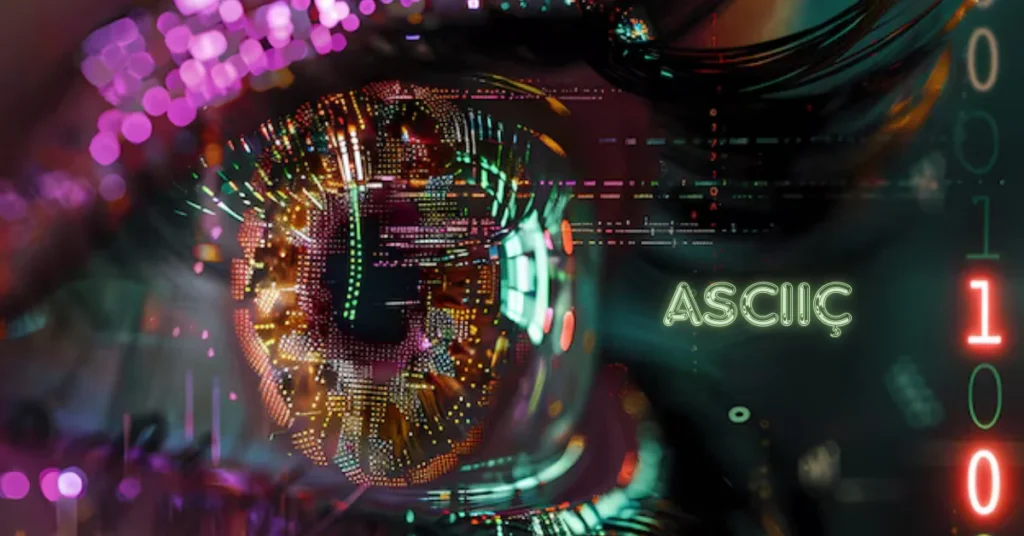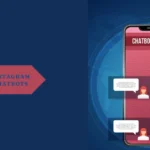Introduction to Character Encoding
In a world dominated by digital communication, the backbone of our text-based interactions is often overlooked: character encoding. Whether you’re coding a website, sending an email, or typing in a chat box, you rely on character encoding to ensure your words appear correctly. Among the many systems that have emerged over time, Asciiç has stood as one of the pioneers. Yet it’s not without its flaws.
Have you ever encountered those strange symbols when opening a document? Or noticed that some messages look jumbled up? These issues can often be traced back to the complexities of character encoding. Enter Unicode and UTF-8—a more comprehensive solution designed for our increasingly globalized digital landscape.
Join us as we explore the evolution from ASCII to modern encodings and uncover how understanding these concepts can enhance your programming experience and troubleshooting skills. Let’s dive into this fascinating journey through characters and codes!
The History of ASCII and its Limitations
ASCII, or American Standard Code for Information Interchange, emerged in the 1960s. It was designed to standardize text representation across different machines. This breakthrough allowed various devices to communicate efficiently.
Initially, asciiç used a 7-bit code to represent characters. This meant it could encode up to 128 unique symbols including letters, numbers, and some control characters. While this was groundbreaking at the time, it quickly became apparent that ASCII had its limitations.
The most significant drawback? The lack of support for non-English characters and special symbols. As globalization expanded, the need for diverse character sets grew increasingly urgent. ASCII’s inability to accommodate accents or multilingual scripts highlighted how inadequate it truly was in a multi-cultural world.
Despite its historical significance, ASCII struggled to keep pace with technological advancements and user needs as diverse communication styles began emerging worldwide.
The Rise of Unicode and UTF-8 Encoding
As technology expanded globally, the limitations of ASCII became more apparent. With only 128 characters, it struggled to accommodate diverse languages and symbols. This gap led to the birth of Unicode.
Unicode emerged as a comprehensive solution, offering over a million characters from various writing systems. It aimed to unify character representation across software applications and platforms.
UTF-8 encoding played a pivotal role in this revolution. It allows for backward compatibility with ASCII while supporting all Unicode characters. This flexibility made UTF-8 the go-to choice for web content development.
Today, UTF-8 is ubiquitous on the internet. It’s widely adopted because it efficiently handles multilingual text without losing any data integrity. As digital communication becomes ever more globalized, embracing UTF-8 ensures seamless interactions across cultures and languages.
Understanding the Basics of ASCII Encoding
ASCII stands for American Standard Code for Information Interchange. This encoding scheme originated in the early 1960s and has become a foundational element of modern computing.
At its core, ASCII uses a 7-bit binary number to represent characters. This allows it to encode 128 unique symbols, including letters, numbers, punctuation marks, and control characters.
Each character corresponds to a specific decimal value. For instance, the letter ‘A’ is represented by the number 65. Understanding this mapping is crucial for anyone working with text data.
While ASCII may seem straightforward, it primarily supports English characters. This limitation becomes evident when dealing with diverse languages or special symbols that fall outside its basic set.
Despite these constraints, ASCII’s simplicity has made it an enduring choice in many programming environments where compatibility matters most.
Common Issues with ASCII Encoding
ASCII encoding, while foundational, has its share of challenges. One primary issue is its limited character set. With only 128 symbols, it can’t represent characters from non-English languages or special symbols.
This limitation often leads to data loss when dealing with diverse text inputs. For instance, if a document contains accented letters or emojis and gets converted to ASCII, those characters might simply vanish or show up as garbled text.
Another common problem arises during file transfers between systems using different encodings. If one system defaults to ASCII while another uses Unicode, the result can be unpredictable—leading to misinterpretations of the content.
Additionally, ASCII lacks support for modern web requirements like HTML entities and rich media formats. This can cause issues in web development where various character types are essential for proper display and functionality.
How to Convert between ASCII, Unicode, and UTF-8
Converting between ASCII, Unicode, and UTF-8 is a straightforward process if you understand the basics.
Start with ASCII, which represents characters using 7 bits. This limits it to 128 unique symbols. To convert ASCII to Unicode, simply assign each character its corresponding code point in the Unicode standard.
When moving from Unicode to UTF-8, things get interesting. UTF-8 can represent every character in the Unicode set while being backward compatible with ASCII. For instance, any character that falls within the 0–127 range remains unchanged.
For programming tasks, many languages offer built-in functions for these conversions. Python’s `encode()` and `decode()` methods are great examples.
Always ensure you’re aware of your data’s current encoding before converting. Mismatched encodings can lead to unexpected results or errors during processing.
Tips for Navigating Character Encoding in Programming Languages
When working with character encoding, start by understanding the defaults of your programming language. Different languages have varying default encodings, which can lead to unexpected behaviors.
Always specify the encoding when reading or writing files. This ensures consistency across different platforms and tools you might use during development.
Pay attention to string operations. Some languages treat strings as byte sequences while others handle them as characters. Knowing this distinction helps avoid errors when manipulating text data.
Utilize libraries designed for handling character encoding effectively. They often provide functions that simplify conversions between ASCII, Unicode, and UTF-8.
Test your applications with diverse input data. Include special characters from various languages to uncover any hidden issues related to encoding before deployment.
Conclusion
Character encoding is a fundamental aspect of how text is represented and understood by computers. As we’ve explored, asciiç laid the groundwork for character representation but has its limitations, especially in our increasingly globalized digital world. The emergence of Unicode and UTF-8 has addressed many of these shortcomings, providing a more comprehensive system that accommodates diverse languages and symbols.
Understanding ASCII encoding helps unravel common issues faced in programming, ensuring smoother transitions between various formats. Converting between ASCII, Unicode, and UTF-8 can seem daunting at first but becomes manageable with practice and the right tools.
As technology continues to evolve, so does the importance of mastering character encoding. By navigating these concepts effectively, you empower yourself to create better software solutions while enhancing user experiences across different platforms. Embracing this knowledge not only benefits developers but also enriches communication in our interconnected world where every symbol counts.
FAQs
What is “asciiç”?
“Asciiç” refers to the character encoding standard ASCII (American Standard Code for Information Interchange) and specifically addresses the inclusion of the character “ç”. While ASCII supports 128 characters primarily for English, the character “ç” falls outside its basic set, leading to the development of Extended ASCII and Unicode to accommodate diverse languages.
Why did ASCII become inadequate for modern communication?
Asciiç limitation to 128 characters makes it unsuitable for representing non-English languages and special symbols. As globalization increased, the demand for diverse character sets highlighted these shortcomings, necessitating more comprehensive systems like Unicode and UTF-8.
How does UTF-8 improve upon ASCII?
UTF-8 enhances asciiç by being backward compatible while supporting all Unicode characters. It allows for a vast array of symbols from various languages and scripts, making it ideal for web development and global communication.
What common issues arise when using ASCII encoding?
Common issues with asciiç include data loss when handling special characters, garbled text during file transfers between systems with different encodings, and challenges in displaying modern web content that requires richer character sets.
How can I convert between ASCII, Unicode, and UTF-8?
To convert from asciiç to Unicode, simply match each ASCII character to its Unicode code point. Converting Unicode to UTF-8 is straightforward, as UTF-8 can represent all Unicode characters while maintaining ASCII compatibility for characters in the 0–127 range. Many programming languages offer built-in functions for these conversions.







